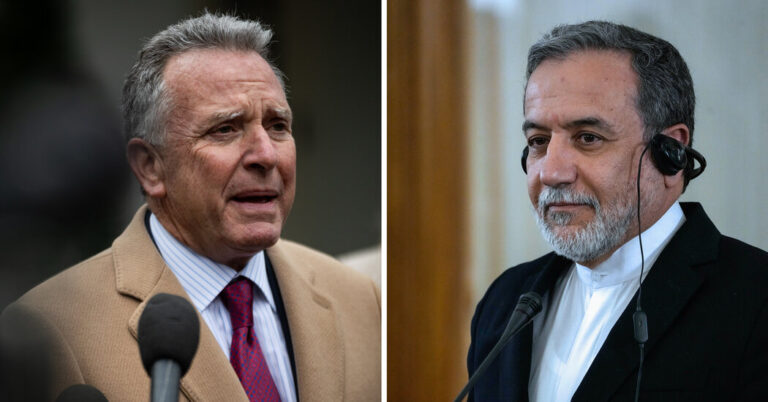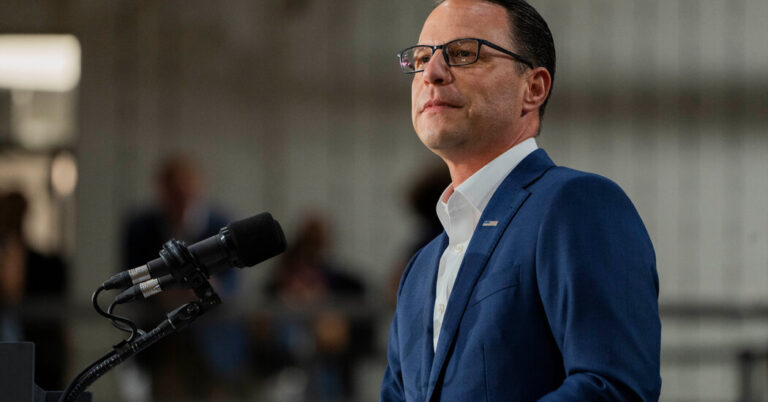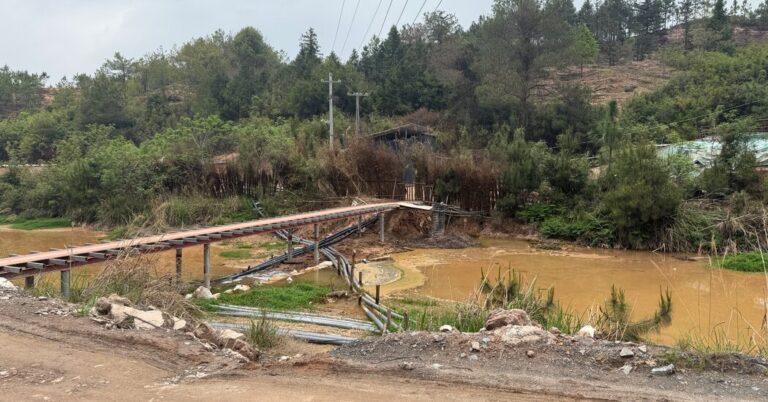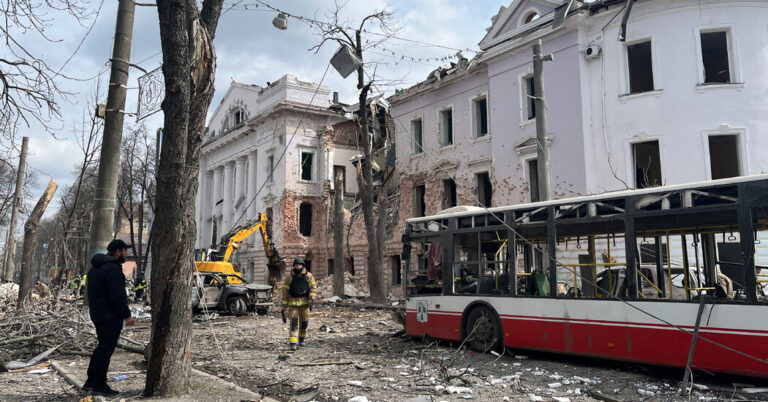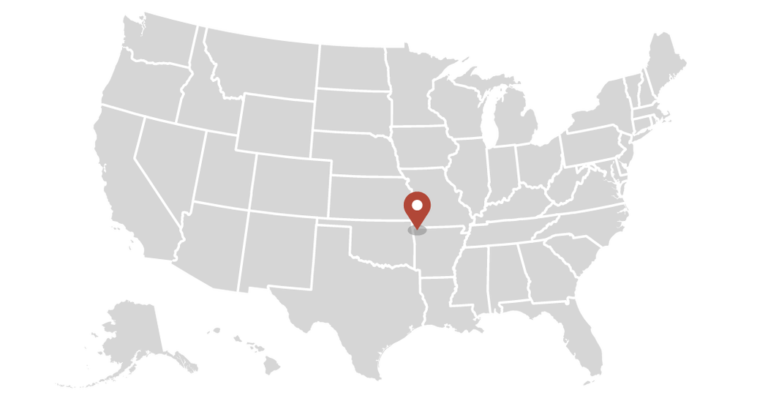The first meeting between the United States and Iran over its expanding nuclear program on Saturday displayed a seriousness of purpose and an effort to avoid what neither side wants, another war in the Middle East. They will talk again next Saturday, but the hard work lies ahead, as hard-liners in both countries, and Israel, are expected to balk at most any deal.
If the first nuclear deal, reached in 2015, was prompted by Iran’s desire to rid itself of punishing economic sanctions, these talks have more urgency. Iran, battered by Israel and with its regional proxies diminished, still wants economic relief. But it also understands that the Islamic Republic itself is under threat and that President Trump, who pulled out of the first deal because he thought it was too weak, may not be bluffing about Iran’s facing “bombing the likes of which they’ve never seen before.”
And Iran’s supreme leader, Ayatollah Ali Khamenei, has given his negotiators at least one last chance to trade Iran’s nuclear ambitions for lasting security.
The talks in Oman also promised some efficiency. The 2015 deal was struck between Iran and six countries — the five permanent members of the United Nations Security Council plus Germany, with the European Union playing the role of intermediary — and took two years.
This time the talks are bilateral, with the Europeans but also Russia and China on the sidelines. And although the United States remains “the Great Satan” for Ayatollah Khamenei, it also holds the key to restraining Israel and securing any lasting settlement. While Iran insisted on indirect talks through Oman, and Mr. Trump on direct talks, the two sides managed to fudge the issue, with Mr. Trump’s special envoy, Steve Witkoff, talking directly to Iran’s foreign minister, Abbas Araghchi, as the meeting ended.
“This is as good a start as it gets,” said Ali Vaez, Iran project director for the International Crisis Group. “They could have stumbled, but they agreed to meet again, they met together at the end and they agreed on the ultimate objective.”
Importantly, Mr. Trump and Mr. Witkoff indicated that their real bottom line is ensuring that Iran can never build a nuclear weapon — despite harsh demands from Trump officials before the talks that Iran dismantle its nuclear program entirely as well as abandon its missile program and its support for its regional proxies.
Iran had made it clear that such broad demands would leave it defenseless and would end the talks before they began. So limiting the goal to ensuring that Iran can never build a nuclear bomb, if the administration sticks with that, would sharply enhance the talks’ chance of success.
“The Iranians came prepared for more than an icebreaker, but with the expectation to break the logjam with the U.S., and most important, to hear directly what is the real U.S. bottom line,” said Vali Nasr, a professor at the Johns Hopkins School of Advanced International Studies. “If it’s no weapon, then they can negotiate on levels of enrichment, inspections and so on. But Iran does not want to get into a situation where it cannot deliver and risk more sanctions and war,” he said. “What Iran wants is pretty clear: credible sanction relief and a deal that sticks.”
Iran insists that its nuclear program is solely civilian, but it has enriched enough uranium close to weapons-grade quality to make at least six bombs, according to data from the International Atomic Energy Agency, which implements the Nuclear Nonproliferation Treaty that Iran has signed.
Despite their mistrust of Mr. Trump, the Iranians think he would be better able to guarantee the sustainability of a deal that he makes and face down his own Republican hard-liners, Mr. Nasr said. The Iranians never trusted President Joseph R. Biden Jr. “to follow through and avoid being undermined by Congress,” he said.
“We’re in the best place we could be after this meeting,” said Sanam Vakil, director of the Middle East and North Africa Program at Chatham House. There were positive statements from both sides around a plan to move forward, she said, and “a mutual understanding about the urgency required, the opportunity presented and signs of pragmatism from both sides.”
The she added, “Of course, the hard stuff lies ahead.”
A serious deal will be enormously complicated and technical, and it will take time. It would also need to survive efforts to undermine the talks by hard-liners in both countries and in Israel. Israel, which opposed the 2015 deal, wants a more comprehensive disarmament of Iran and keeps talking about the need to strike it militarily now, when the regime is weak and its air defenses have been badly compromised by Israeli airstrikes.
Iran has in the past vowed to destroy Israel, and Prime Minister Benjamin Netanyahu of Israel says he wants Iran to no longer be able to enrich any uranium at all. Israel, citing the Hamas attack in Gaza, has badly damaged Iranian proxies, including Hamas and Hezbollah in Lebanon, and wants to try to ensure that Iran cannot rebuild them.
But Iran may also be encouraged that Mr. Trump announced the talks in the Oval Office next to Mr. Netanyahu, who did not look or sound very pleased about them. Iran will see “a powerful signal from Trump that he’s not owned by Netanyahu,” Mr. Nasr said.
The hope is that a next meeting or two can produce an interim agreement that gives both sides confidence to move forward, with short-term measures from both sides so long as the talks continue. They could include Iran’s agreeing to freeze uranium enrichment and allow more inspections in return for Washington’s suspending some of its “maximum pressure” sanctions.
Iran is likely to insist on a step-by-step process that could take several years, Mr. Nasr said, “to help the deal grow roots before someone else comes into office and tried to undo it.” A longer process would also provide more security for Iran.
Still, Iran has no reason to stretch out the talks themselves. “Iran’s leverage is its nuclear enrichment, and more time won’t give them more leverage,” Mr. Vaez said. And then there is “the ticking time bomb of the snapback sanctions.”
Those sanctions, suspended under the 2015 deal, can be restored if any signatory — in this case, the Europeans — decides that there is no new deal or significant progress toward one. But that must happen before Oct. 18, when the ability to “snap back” expires. Officials say that the Europeans are exploring whether that deadline can be delayed, but the mechanism to do that is unclear.
In any case, the analysts agree, Iran does not want to be blamed for the failure of these talks. If they do fail and war ensues, the regime wants to be able to blame American perfidy and bad faith.
So if a deal can be done, Iran will want guarantees this time that it will be durable and deliver commercial engagement in a meaningful and long-term way, Ms. Vakil said. Iran will want to know “how Trump can guarantee protection that other presidents have been unable to do.”
And the United States, she said, will want to know what guarantees Iran can provide for the security of Israel and the stability of the larger Middle East.
“A deal must be mutually beneficial, but it requires a lot of trust and accountability along the way that both sides simply don’t have right now,” she said.


